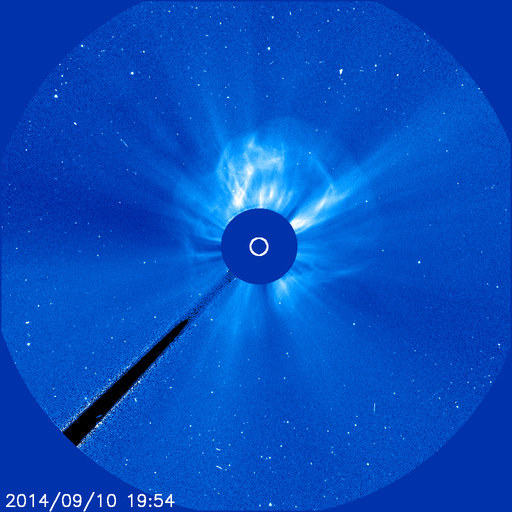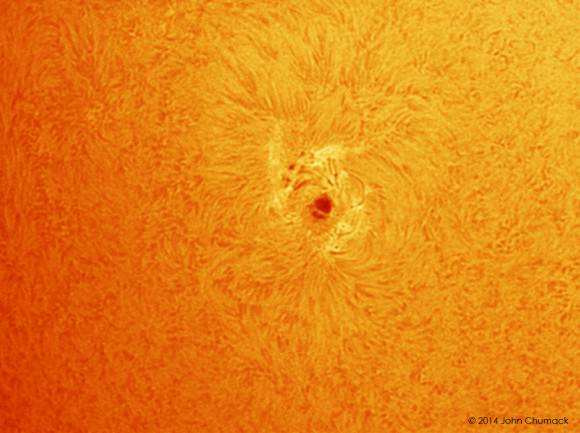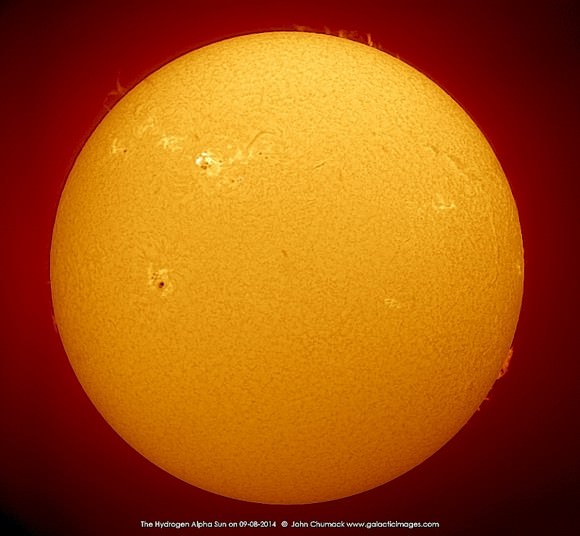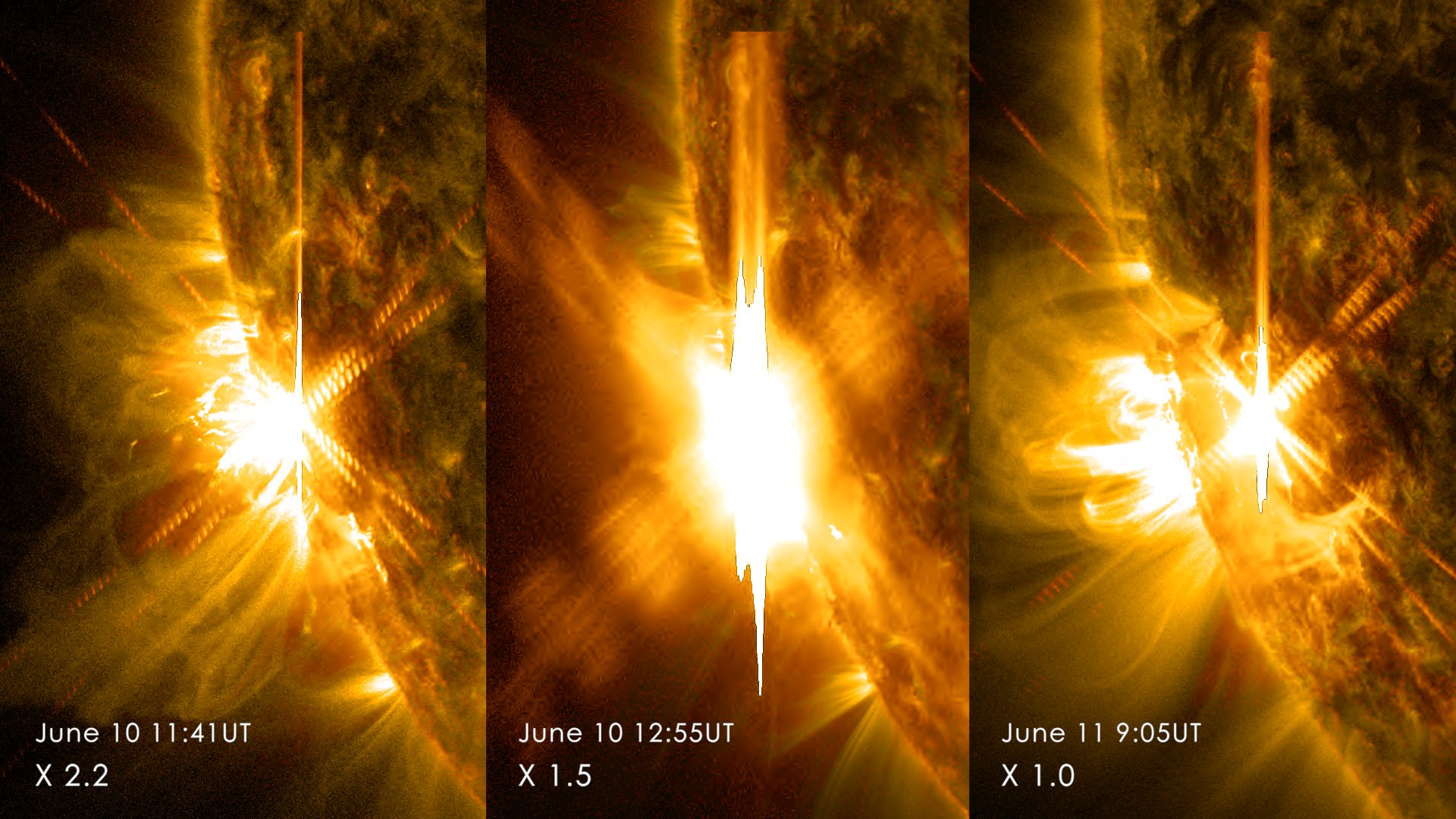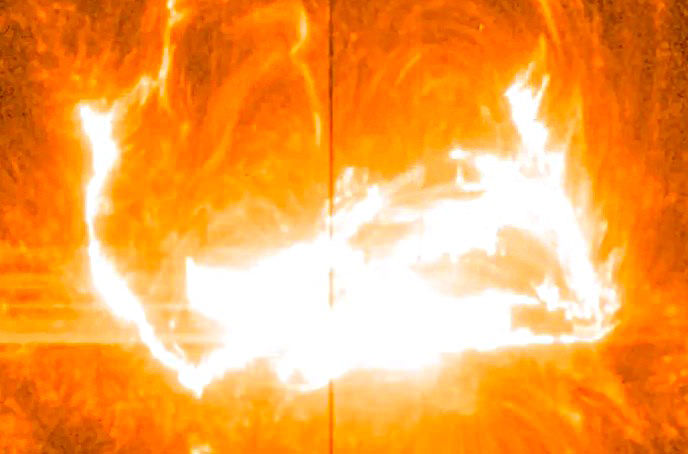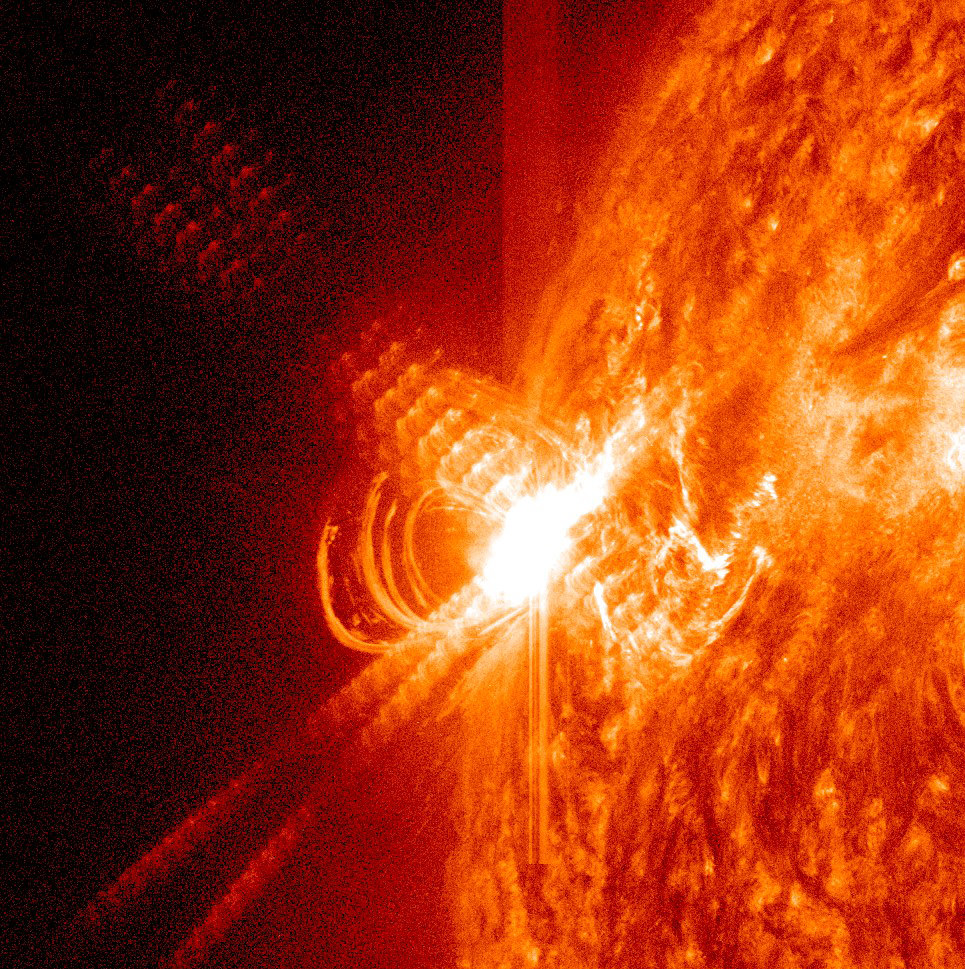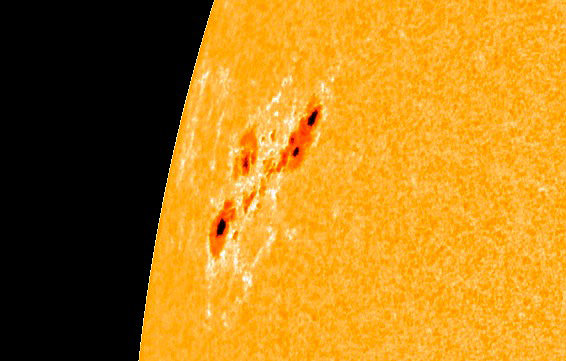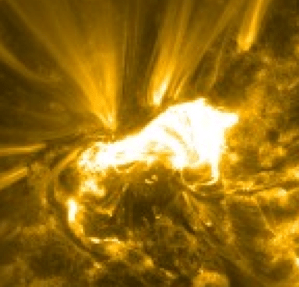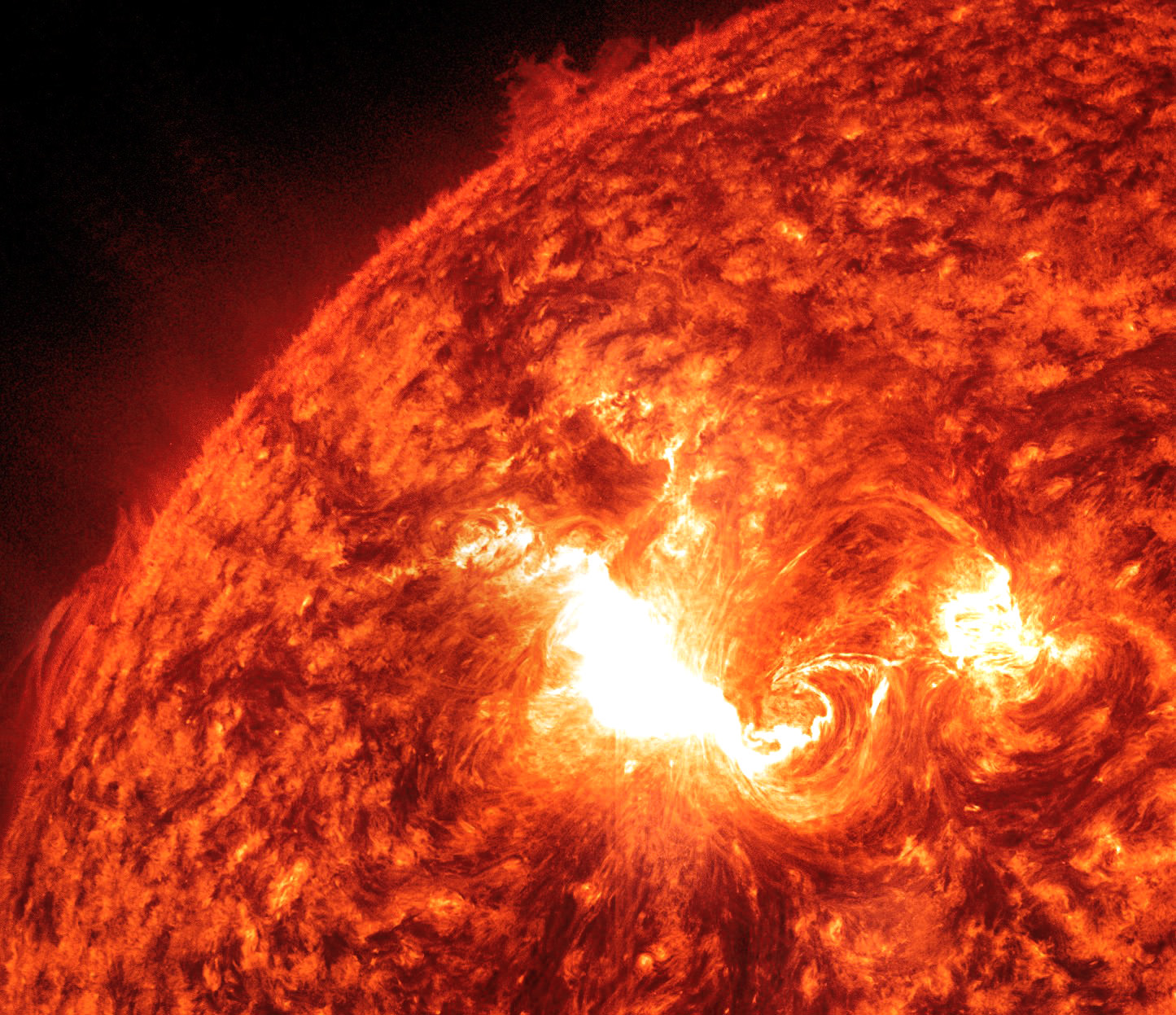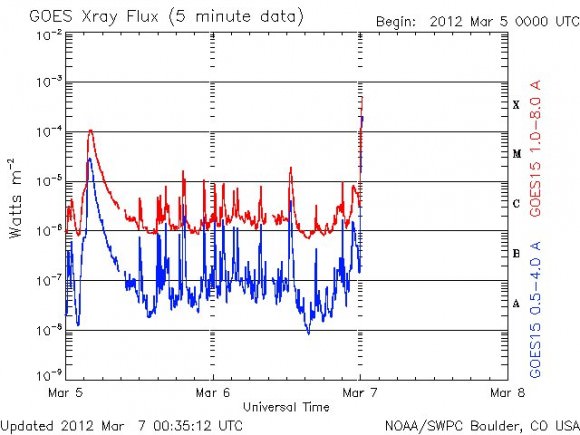The past summer has been a pretty terrible time in terms of weather. In addition to raging fires in Canada’s western province of British Columbia, the south-eastern United States has been pounded by successive storms and hurricanes – i.e. Tropical Storm Emily and Hurricanes Franklin, Gert, Harvey and Irma. As if that wasn’t enough, solar activity has also been picking up lately, which could have a serious impact on space weather.
This past week, researchers from the University of Sheffield in the UK and Queen’s University Belfast detected the largest solar flare in 12 years. This massive burst of radiation took place on Wednesday, September 6th, and was one of three observed over a 48-hour period. While this latest solar flare is harmless to humans, it could pose a significant hazard to communications and GPS satellites.
The flare was also the eighth-largest detected since solar flare activity began to be monitored back in 1996. Like the two previous flares which took place during the same 48-hour period, this latest burst was an X-Class flare – the largest type of flare known to scientists. It occurred at 13:00 GMT (06:00 PDT; 09:00 EST) and was measured to have an energy level of X9.3.
Essentially, it erupted with the force of one billion thermonuclear bombs and drove plasma away from the surface at speeds of up to 2000 km/s (1243 mi/s). This phenomena, known as Coronal Mass Ejections (CMEs), are known to play havoc with electronics in Low Earth Orbit (LEO). And while Earth’s magnetosphere offers protection from these events, electronic systems on the planets surface are sometimes affected as well.
The event was witnessed by a team from a consortium of Universities, which included the University of Sheffield and Queen’s University Belfast. With the support of the Science and Technology Facilities Council, they conducted their observations using the Institute for Solar Physics‘ (ISP) 1-meter Swedish Solar Telescope, which is located at the Roque de los Muchachos Observatory – operated by the Instituto de Astrofisica de Canarias.
As Professor Mihalis Mathioudakis, who led the project at Queen’s University Belfast, indicated in a recent University of Sheffield press statement:
“Solar flares are the most energetic events in our solar system and can have a major impact on earth. The dedication and perseverance of our early career scientists who planned and executed these observations led to the capture of this unique event and have helped to advance our knowledge in this area.”
The team was able to capture the opening moments of a solar flare’s life. This was extremely fortunate, since one of the biggest challenges of observing solar flares from ground-based telescopes is the short time-scales over which they erupt and evolve. In the case of X-class flares, they are capable of forming and reaching peak intensity in just about five minutes.
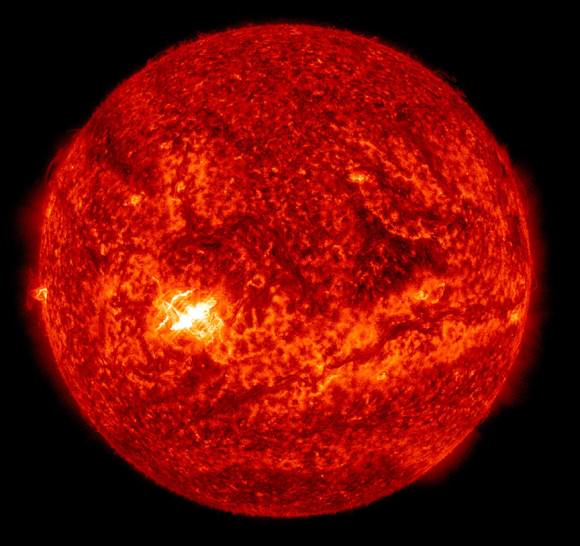
In other words, observers – who only see a small part of the sun at any one moment – must act very quickly to ensure they catch the crucial opening moments of a flare’s evolution. As Dr Chris Nelson, from the Solar Physics and Space Plasma Research Centre (SP2RC) – who was one of the observers at the telescope – explained:
“It’s very unusual to observe the opening minutes of a flare’s life. We can only observe about 1/250th of the solar surface at any one time using the Swedish Solar Telescope, so to be in the right place at the right time requires a lot of luck. To observe the rise phases of three X-classes over two days is just unheard of.”
Another interesting thing about this flare, and the two that preceded it, was the timing. At present, astronomers expected that we were in a period of diminished solar activity. But as Dr Aaron Reid, a research fellow at at Queen’s University Belfast’s Astrophysics Research Center and a co-author on the paper, explained:
“The Sun is currently in what we call solar minimum. The number of Active Regions, where flares occur, is low, so to have X-class flares so close together is very usual. These observations can tell us how and why these flares formed so we can better predict them in the future.”
Professor Robertus von Fáy-Siebenbürgen, who leads the SP2RC, was also very enthused about the research team’s accomplishment. “We at SP2RC are very proud to have such talented scientists who can make true discoveries,” he said. “These observations are very difficult and will require hard work to fully understand what exactly has happened on the Sun.”
Predicting when and how solar flares will occur will also aid in the development of early warning and preventative measures. The is part of growing industry that seeks to protect satellites and orbital missions from harmful electromagnetic disruption. And with humanity’s presence in LEO expended to grow considerably in the coming decades, this industry is expected to become worth several billion dollars.
Yes, with everything from small satellites, space planes, commercial habitats and more space stations being deployed to space, Low Earth Orbit is expected to get pretty crowded in the coming decades. The last thing we need is for vast swaths of this machinery or – heaven forbid! – crewed spacecraft, stations and habitats to become inoperative thanks to solar flare activity.
If human beings are to truly become a space-faring race, we need to know how to predict space weather the same we do the weather here on Earth. And just like the wind, the rain, and other meteorological phenomena, we need to know when to batten down the hatches and adjust the sails.
Further Reading: University of Sheffield


